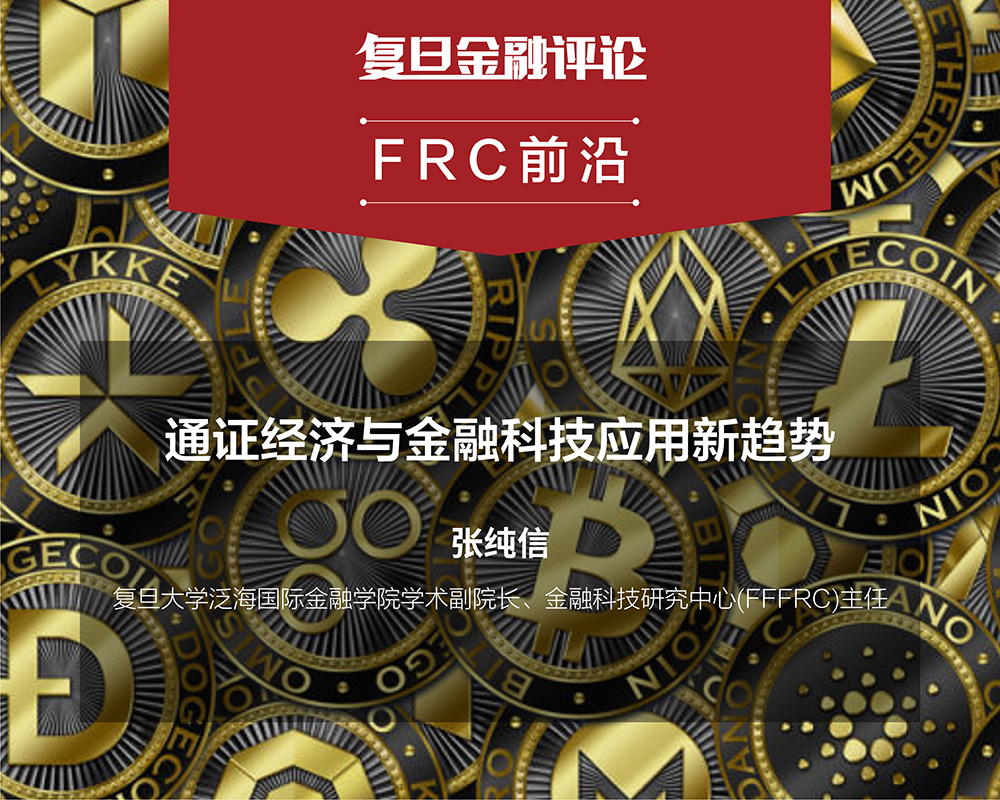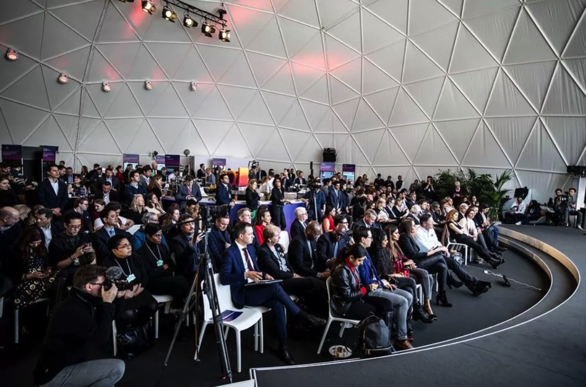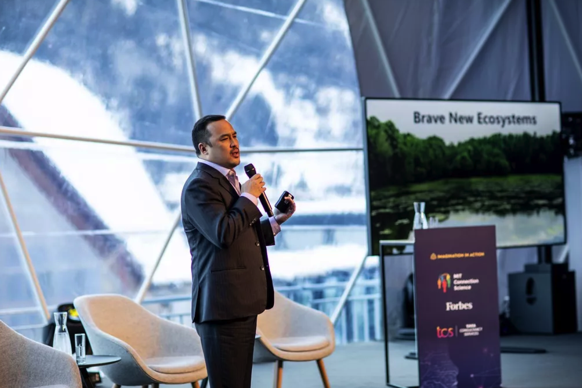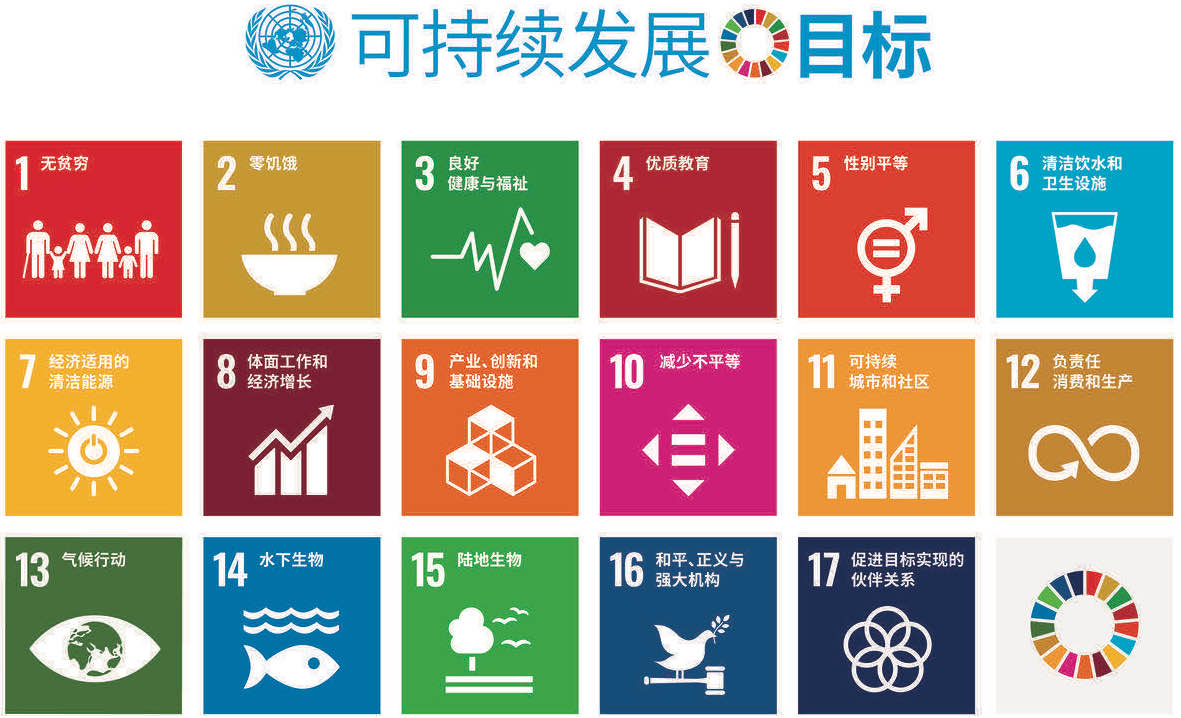通证经济与金融科技应用新趋势

导 语
本期前沿报告关注的话题包括中国试点央行数字货币“混合链”、通证化促进数字资产实施、金融科技赋能可持续发展、上海金融科技生态系统和社区建设、区块链在公共卫生事件中的应用等。

2019年10月24日,习近平主席在中央政治局第十八次集体学习时就区块链技术发展现状和趋势进行发表的讲话极具战略意义。今年达沃斯世界经济论坛的相关活动中,金融科技占据了绝对的中心位置,中国视角也成为全球专家们最关注的话题之一。在经历了2019年相对疲软的状态之后,证券型通证发行(STO)市场渐趋复苏。因此,论坛围绕各国央行对国家数字货币的态度、资产数字化的未来以及金融科技可能为可持续发展带来的益处等话题展开了激烈讨论。
Following President Xi’s announcements on a meeting of the Political Bureau of the CPC Central Committee, which highlighted the strategic development of Blockchain on October 24, 2020 started off with a bang as FinTech took center stage at the events surrounding WEF Davos and the China perspective being chief among topics of interest. There was much discussion surrounding the attitudes of Central Banks and national digital currencies, the future of asset digitalization in the wake of a relatively sleepy STO (Security Token Offering) market in 2019, and the potential for FinTech to do good and contribute to sustainable development.
中国试点央行数字货币“混合链”
China’s Central Bank Digital Currency in the Pipeline

习近平主席于2019年10月公开表示,中国必须在全球区块链领域发挥带头作用。此番讲话开启了中国的区块链改革的闸门,大幅加快了相关领域的发展进程。随后,中国人民银行(PBOC)宣布继续开发并推行中央银行数字货币(CBDC),此举也起到了同样的作用。全球关注区块链的其他国家也对此做出了反应,比如泰国也宣布了它的央行数字货币,美国也加快了它在该领域的开发计划。
President Xi publicly remarked in October that China must position itself to take a leadership role in Blockchain, unleashing the floodgates of Blockchain reform and activity that had been slowly building in China including the subsequent announcement by the People’s Bank of China (PBOC) that it is moving forward with the development and launch of its Central Bank Digital Currency (CBDC). The rest of the Blockchain world has responded in kind with countries like Thailand making CBDC announcements and the US accelerating its own plans in the area.
发行数字货币的中央银行为连接实物现金结算和数字交易与资产提供了关键纽带,从而实现了不同货币之间、数字和实物之间的交换无缝对接——这或许是打通数字资产和实体贸易真正结合的最终环节。
Central Banks issuing digital currency provides the critical channel linking physical cash settlement and digital transactions/assets, allowing seamless transfers of currency and the exchange of digital-for-physical. This is potentially the final major missing link that will enable the true integration of digital assets and physical commerce.

在此方面,中国已经宣布了一个双层体系。央行在这个体系中将继续发挥核心作用,向下层政策性银行推行央行数字货币,从而为数字化交易提供流动性。与完全去中心化的系统相比,这种混合方案(混合链)可能提供了一种更实用的方法。该方法得益于区块链技术的诸多优势,同时可以使监管机构和现有金融机构有效地参与进来。据观察,目前中国正在清理无牌照、无监管的参与者,以期能够实现有秩序的宽松监管。对于目前的大型金融机构,特别是对于第三方支付的提供方,这是一个机会,使其能够发展成为推广中国央行数字货币的核心渠道。
China has announced a two-tier system where PBOC will continue to play a core role, pushing CBDC down through the policy banks, which in turn will provide liquidity for digital transactions. In contrast with fully decentralized systems, this hybrid option potentially delivers a more measured approach, one that benefits from the many of the advantages of Blockchain technology while also effectively engaging regulators and existing financial institutions. It appears that China is now clearing out unlicensed, unregulated players in anticipation of controlled deregulation. This is an opportunity for existing mega-players, particularly third-party payment providers, to become a core conduit for China’s CBDC to popularize.
第一波行动可能会在试验区和经济特区/自贸区进行试点,并且这些操作可能也会仅在国内进行。这就引出了如何进行国际结算以及如何与全球市场衔接的问题。整体经济效率的真正提高将取决于这种数字资产的交易状况和市场接受度。在没有真正的资产交易时,现有的超级玩家可能会扮演做市商的角色。
The early action is likely to be in testbeds and special economic zones and is likely to remain domestic. An open question, then, is what about international settlement? True gains in the overall efficiency of the economy will rest in how well/quickly exchanges develop for the assets that the currency serves. It could be the case that existing mega-players will take on the role of market-makers in the absence of true exchanges.
通证化促进数字资产实施
Digital Assets Adoption Driven by Tokenization

作为采取资产数字化的关键突破,证券型通证发行(STO)的发展不容忽视。在许多司法管辖区域,尤其是经济发达的地区,已经有现成的针对传统资产的法律法规。考虑到为投资者提供保护,部分监管机构放缓了实践首次代币发行(ICO)和完全去中心化的初衷。而证券型通证发行(STO)可借用现有的资产证券化和信托监管框架,促进数字资产发展的机会。借由这次机会,我们只需要修订现有政策而非重新编写。对于监管者来说,监管的可靠性和提供透明度的能力至关重要。回想2008年,当时信贷违约掉期(CDS)不受监管,很明显,证券透明度和有效监管的缺乏导致了不端行为出现,投资者信心丧失。我们已经看到,在美国商品和期货交易委员会(CFTC)的监管下,比特币期货核心数字资产的波动性已经开始降低。
One should not discount the development of STOs as a major watershed moment for digital asset adoption. In many jurisdictions, especially in developed economies, legislation and regulation already exists for traditional assets. While ICOs (Initial Coin Offerings) and the original principles of full decentralization have slowed adoption by regulators seeking to provide investor protection, STOs are an opportunity to couch the development of digital assets in existing regulatory frameworks—think revising policies rather than writing policies from scratch. This may be just the thing many economies need to jolt them into action as it’s clear that the ability to monitor and to provide transparency is important to regulators. Thinking back to the unregulated days of credit default swaps (CDS) in 2008, it’s clear that the lack of transparency in securities and of effective monitoring contributed to both bad behavior and loss of investor confidence. We have already seen that bitcoin futures, overseen by the US Commodity and Futures Trading Commission, have begun to reduce volatility in that core digital asset.
一方面,在中国,核心参与者似乎已经准备好,向一个被适度监管的数字资产生态系统迈进,许多区域的官方部门(包括杭州、深圳)已经给出了监管沙盒提案。对于通证化的资产,尤其是以房地产为依托的通证资产,我们仅需要对现有的证券化和信托基金法规等进行修订。另一方面,若将洗钱和保护投资者作为核心问题,集中监管将是必须的。因此,为了兼顾以上两方面的发展,央行针对国家数字货币采取双层体系也可能作为广泛数字资产实施方法的模板。
In China, where it appears core players are ready to move forward with a digital asset ecosystem that is inclusive of appropriate regulation, sandboxes have been proposed by a number of regional authorities, notably Hangzhou and Shenzhen. Asset-backed, tokenized assets, particularly those backed by real estate, appear to be first on the to-do list and represent a relatively small revision to existing securitization and trust-fund regulation. With money laundering and investor protection important concerns, central monitoring is going to be a must. It would not be surprising to see policy in this space to mirror the two-tiered approach taken with respect to CBDC.
金融科技赋能“一带一路”'沿线可持续发展
FinTech Empowers Sustainable Growth along the Belt and Road

关于金融科技的发展将如何影响可持续发展,尤其是对于金融的普惠性和长期可行的经济生态系统,讨论颇多。普惠金融是联合国17个可持续发展目标的重要内容之一,其中一个可能产生影响的领域就是使用通证化对“一带一路”沿线的基础设施建设项目进行分馏化操作。这些项目往往资本支出巨大且投资回报期长,这正是金融投资者不满的原因。分馏化方法将大型资本支出分割成较小的部分,而这些较小的资本支出至少可以部分地被当地经济吸收。这种方法具有诸多优势。
There is much discussion of how FinTech developments will impact sustainability, specifically financial inclusion and long-term viable economic ecosystems. Financial inclusion is featured prominently in the 17 United Nations Sustainable Development Goals, and one area of potential impact is the use of tokenization to fractionalize infrastructure projects along the Belt and Road. These projects tend to require large capital outlays with long-term horizons, two characteristics that are the ire of financial investors. Fractionalization provides a way to split the large capex into smaller parts that may be absorbed, at least in part, by the local economy. This has a number of advantages.
“一带一路”沿线建设项目将促进当地的经济增长,而分馏化通过缩减最小投资的规模提供了金融普惠性,使得当地居民能够从这些经济增长中获益。与此同时,分馏化有可能创造出一套新的可投资资产和急需的流动性,从而在其他可选措施缺位的情况下为人们的财富增长和保值提供工具。
Fractionalization provides for financial inclusion by reducing minimum investment size, allowing local constituencies to benefit from the resulting economic growth. At the same time, it potentially creates a new set of investable assets and much needed liquidity, providing a tool for wealth growth and preservation where few options may be available.

此外,基础设施建设为当地经济带来的益处远远超过了项目本身的财务回报(比如创造财政收入、推动工业发展以及改善人们整体生活质量)。因此,与国外的投资者或单纯的金融投资人相比,本地投资者会对项目有更高的估值,并且通常更愿意长期持有这些投资。与此相反,出于对项目时长、国家风险以及其他因素的考虑,国外的投资者会压低对项目的估值。因此,在项目当地进行融资可以降低资本成本、改进整体股东结构,并减少项目开发人的开发风险和初始支出。
Furthermore, infrastructure delivers benefits to the local economy far in excess of the financial return of the project itself including local revenue generation, industrial development, and improvements in overall quality of people’s life. As such, local investors value the projects more dearly than financial investors and are generally willing to hold investments for longer horizons. Foreign investors discount the projects for their length, country risk, and other considerations, so financing locally lowers cost of capital, improves the overall shareholder structure, and reduces development risk and initial outlay for the project initiators.
最后,区块链技术保证了财产权和代理问题(因为投资直接参与项目而不是通过中介来进行),并通过应用智能合约来确保执行。在发达国家,这可能不是最关键的,但对于新兴经济体来说这可能是采用区块链最重要的优势。
Finally, Blockchain provides assurances with respect to property rights, agency concerns (since it is a direct investment rather than executed through an intermediary), and execution through the application of smart contracts. In developed countries, this might not amount to much, but it might indeed be the most important advantage of the Blockchain approach in emerging economies.
上海金融科技发展铸就共生生态
Spotlight: FinTech in Shanghai towards a Symbiosis

上海市政府在《加快推进上海金融科技中心建设实施方案》的公告中,将“快速改善金融科技发展环境”列为其职责。在呼吁加大研发力度和政策/监管改革的同时,该方案还重视打造一个金融科技生态系统和社区,与区块链和信息共享的核心原则保持一致。鉴于当前上海市在金融服务方面的实力,及其蓬勃的国际影响力和资源,上海应该非常适合在该领域起到带头作用。
The Shanghai Municipal Government has joined the charge to quickly improve the environment for FinTech development in its announcement of the “Plan to Hasten the Development of the Shanghai FinTech Center”. Along with a call for increased research and development and policy/regulatory reform, the plan also calls for development a FinTech ecosystem and community, something that is consistent with the core principles underlying Blockchain and information sharing. Given its existing strength in financial services, combined with its vibrant international presence and resources, Shanghai should be well-suited to take the lead.
同样值得我们注意的是,该方案不仅呼吁金融科技的硬件支持,还倡导金融科技应用的开发,同时吸引从顾客、用户、开发商到监管机构和传统金融行业在内的各种利益相关者的参与。无论是“硬核”的金融科技参与者,还是金融体系内现有的大型公司,双方都更愿意合作而非彼此竞争。而这种合作意愿对于上海能否实现其长期目标至关重要。
Also noteworthy is the call for development of FinTech applications and not just hardware support as well as the engagement of a variety of stakeholders ranging from customers, users, developers, regulators, and the traditional finance industry. The willingness of the “hard-core” FinTech players to work together with, rather than compete against, existing mega-firms in the financial system and vice versa will be critical in determining whether Shanghai will achieve its long-term goals.
区块链在公共卫生事件中有效落地
Blockchain Applied in Public Health

目前,新型冠状病毒肺炎(COVID-19)的突发卫生事件暴露了一个紧迫的社会需求:我们需要一个经实证的、透明的、安全的、覆盖全国(甚至全球)的信息上报系统。由此凸显出了一个区块链技术的潜在应用场景。现行的多层级传染病上报系统会减慢传染病上报过程和信息聚合的效率。比如,只有当传染病案例积攒到一定数量时才能够被国家相关主管部门注意到。同时,收集来自各个地方医院、诊所的个体报告也需要时间。地方单个卫生部门的信息量有限,无法参考共享信息架构提供的大量病例样本或综合专业知识,因此仅能观察到局部情况。这种局限性增加了医生或医院被错误信息误导,而做出错误决定的可能性。因此,一旦上报机构或个人在被错误信息误导的情况下确定或否认了疫情的出现,即使是出于善意,他们也可能会进一步误导病情发现或加剧负面反应。
The current health emergency surrounding COVID-19 has highlighted a potential use-case for blockchain technology as it has highlighted the need for a nation-wide (or even global) reporting system that is validated, transparent, and secure. Existing multi-layered systems unfortunately slow reporting and information aggregation. For example, a certain number of cases must “amass” in each locality before it gets noticed by the national authority and a certain amount of time elapses before information from numerous reporting entities (hospitals/clinics/etc.) can be collected. Local health units have a limited amount of information, each seeing only a part of the picture, unable to benefit from the large sample size or combined expertise that a shared information structure would provide. Even well-intentioned, mis-informed individuals can further mislead findings or exacerbate responses once the crisis is identified.
相对于上述的现有传染病上报及预警系统,分布式数据结构可以确保信息更快地传播,从而能够帮助更迅速地辨别疫情并采取行动。此外,此类信息的透明性与合规性将允许多个参与者同时研究信息,从而使得人们能够获得更充分的信息,并有更强的信心更快地做出发布危险信号等决定。这些通过共识达成的决定将有助于在恐慌易发时期阻止错误或误导信息的出现。同时,因为区块链系统可以提供安全性、激励机会与认证机制,这就使得“积极行为者”能够受到鼓励并且“消极行为者”的负面影响被削弱。
A distributed data structure could ensure faster information dissemination leading to quicker identification and call to action. Further, the transparency of such information will allow multiple actors to study information simultaneously, allowing red flags to be raised more quickly with fuller information and greater confidence. Such determinations, arrived at by consensus, would help to block mis-information in a time and situation prone to panic, and a Blockchain-based system can provide both the security and incentive opportunities to encourage good actors and reduce the influence of bad ones.
这个新型的系统受益于其自身共享、分布的本质,同时也鼓励医疗机构、医务人员、和社区成员之间的高度协作。这种混合链结构比私有链具有更高的可审计性,同时也保有了某些公有链难以实现的高安全性和大数据吞吐量。这样的系统比现有的上报系统更加透明、灵活,同时也要能够被官方积极有效地监控。
Such a system should benefit from it shared, distributed nature, encouraging a high level of collaboration between medical authorities, hospital staff, and members of the community. This kind of a hybrid chain structure delivers higher auditability than private chain while maintaining the high level of security and data throughput difficult for some public chains. Such a system would be more transparent and more flexible than the existing reporting system while being actively monitored by authorities.
*本文经原作者授权,如需转载请联系授权并注明出处。